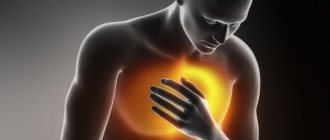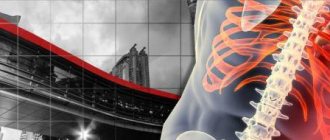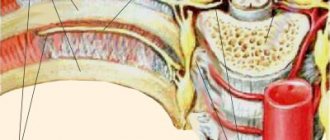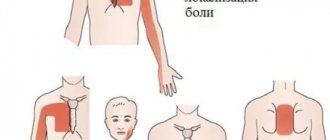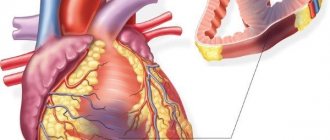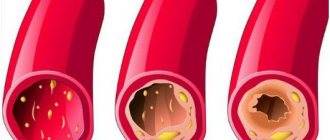About 25% of people have experienced pain on the right side of the chest at least once in their lives. Among all those who sought medical help for this symptom, young and middle-aged people predominate.
Determining the exact cause of this type of pain is a difficult task. This is due to the anatomical proximity of the chest organs to its walls and the peculiarities of innervation, when the so-called decussation of the pain syndrome is formed. As a result of this effect, the pathology of various internal organs is manifested by pain on the surface of the chest, and pain associated with breathing does not exclude extrapulmonary pathology. This chest symptom is often caused by a combination of various causes.
Classification of causes of pain
If discomfort in the left parts of the chest is always associated with damage to the heart, then the most common causes of pain on the right include pathology of the respiratory system and the musculoskeletal system. Cardiogenic (heart) pain affects this part only in exceptional cases.
Despite the fact that right-sided malaise is predominantly associated with spinal pathology, when seeking medical help, it is first necessary to exclude diseases of the internal organs.
The causes of discomfort in the right parts of the chest can be classified as follows:
- respiratory diseases;
- musculoskeletal pathologies;
- diseases of the circulatory system;
- gastrointestinal diseases;
- pathology of peripheral nerves;
- traumatic injury.
Diagnostic measures
Listed above are just some of the diseases that cause people to experience stabbing pain on the right side at the level of the heart. This is a very multifaceted symptom, and it can indicate anything.
To identify the cause, you need to contact a therapist, who, after a general examination, will either redirect to another specialist or prescribe diagnostic measures. Depending on the suspicion of a particular disease, one of the following may be prescribed:
- Electrocardiography (required, as a rule).
- Analysis for the detection of pancreatic enzymes in the blood.
- Gastroscopy.
- MRI of the spine.
- X-ray of the chest.
- CT scan.
- Echocardiography.
- General blood analysis.
- Ultrasound of the pleural cavity.
- Sputum analysis.
- X-ray of the lungs.
- Study of pleural exudate of a bacteriological or cytological nature.
- Thoracoscopy with pleural biopsy.
- MSCT of the heart.
- Diagnostic puncture of the pericardium.
All these methods are applicable if one of the above diseases is suspected. But, of course, the doctor can prescribe other diagnostic measures. In any case, thanks to modern technologies, it is possible to find out why a person has pain under the chest on the right in the shortest possible time.
Pneumonia
Pain syndrome in pneumonia develops with extensive damage to the lung tissue involving the pleura and intercostal nerves. This disease is called lobar, lobar or pleuropneumonia. The pain appears suddenly. It is intense and intensifies sharply when breathing and coughing, so patients reflexively press their hand to their chest when inhaling. During the examination, there is a lag in the chest in the act of breathing on the affected side. Additionally, the clinical picture of pleuropneumonia includes severe symptoms of intoxication, fever, cough with “rusty” sputum, and shortness of breath.
With focal pneumonia, patients may experience only minor discomfort.
Pleurisy
This is the general name for inflammatory lesions of the serous membrane that surrounds the lungs. Its symptoms are as follows:
- Sharp pain in the right side of the chest. It gets worse when bending over, sneezing and coughing.
- Temperature increased to 38-38.5 °C (fever may occur with exudative pleurisy).
- Dry cough that occurs when you inhale too hard.
- Malaise and weakness.
- Muscle pain of an intermittent nature, aching joints.
- Headache attacks.
- Shallow, rapid breathing, shortness of breath.
- Coughing up blood in severe cases.
Treatment involves taking the following medications:
- Antibiotics (if pleurisy is infectious).
- Painkillers and anti-inflammatory (no steroids included).
- Immunostimulants.
- Cardiovascular drugs.
- Antitussives and diuretics.
- Glucocorticosteroids.
A gentle diet, taking multivitamins and undergoing physiotherapeutic procedures are also recommended. Surgical removal of exudate from the pleural cavity is indicated when there is an excess amount of fluid (if the effusion reaches as far as the 2nd rib, or if it compresses neighboring organs).
Pleurisy (dry)
Chest pain with pleurisy is the leading symptom. It appears during deep breathing and is localized in the inferolateral and anterior parts of the chest. Typically, when inhaling, patients press their hand to their chest, limiting its mobility and thereby reducing pain. A cough that appears at the height of inspiration, as well as sneezing, laughing, and bending in a healthy direction sharply increase the discomfort.
If inflammation of the pleura is localized in the diaphragm, then pain along the phrenic nerve spreads to the anterior abdominal wall, shoulder and neck.
The causes of pleurisy can be both infectious and non-infectious diseases. The leading place among them is occupied by tuberculosis, malignant tumors (mesothelioma, ovarian cancer, lung cancer) and systemic connective tissue diseases.
The etiology of pleurisy can be assumed by assessing the severity of the development of the process. With pneumothorax, chest pain is always acute and occurs suddenly. With pneumonia, it appears subacutely, with accompanying fever, shortness of breath and cough. If pain increases gradually, over a long period of time, against the background of significant weight loss, sweating, weakness, tuberculosis or cancer should be suspected.
Manifestations of pleurisy that occur 2–4 weeks after myocardial infarction may indicate the development of Dressler's syndrome.
Causes of chest pain on the right
The most well-known causes of chest pain on the right are:
- Respiratory diseases. These include tuberculosis, pneumonia, emphysema, dry pleurisy, and lung cancer. A sharp, sudden pain appears in the right chest, aggravated by coughing. When inhaling, inspiratory shortness of breath is disturbing, leading to pain. It becomes difficult for the sick person to breathe, and sometimes suffocation occurs.
- Dissecting aortic aneurysm. The disease is characterized by intense pain in the chest on the right side, which can extend to the neck and lower jaw. Discomfort appears in the abdominal area. The duration of unpleasant sensations often reaches several days.
- Pulmonary embolism. Acute painful syndrome is accompanied by hemoptysis and shortness of breath. In rare cases, loss of consciousness occurs. The pain gets worse when you take a deep breath or cough. The duration of severe pain can be several hours.
- Intercostal neuralgia. Acute pain occurs when breathing, coughing, sneezing, yawning and is concentrated in the area of distribution of intercostal nerves. The pain syndrome occurs with tingling, numbness, and burning.
- Osteocondritis of the spine. With pathologies of the cervical and thoracic regions, there is pain in the chest on the right, and the pain intensifies with intense inhalation and exhalation, with movement, and heavy physical activity. When the disease worsens, discomfort may persist for several weeks.
- Myositis. The disease is characterized by aching pain, in which the back above the lower back and shoulders also hurt. They become intense when walking and do not stop after resting. Subsequently, muscle weakness develops, and in rare cases, muscle atrophy.
- Chest injury (bruise, muscle strain, rib fracture) is a common cause of discomfort, causing acute pain, especially when breathing. Painful sensations are also observed when touched or pressed.
- Breast diseases (mastopathy, mastitis, malignant tumors). With these diseases, aching pain appears in the chest on the right, intensifying shortly before the menstrual cycle.
- Myocardial infarction. The disease is accompanied by severe, unbearable pain associated with irradiation from the heart. Cutting pains can cause fainting. The patient urgently needs to be hospitalized.
- Angina pectoris. It is characterized by severe, pressing pain, which in some cases spreads to the arm, neck, throat, and back. Often the pain is accompanied by severe weakness and nausea. An attack of angina lasts about 15 minutes.
- Pericarditis. In pathology, sharp pains are observed in the right side of the chest. They are also capable of appearing on the left and in the middle. The pain increases with deep breathing and coughing. Physical activity is accompanied by chills and weakness.
- Viral infectious diseases. Sharp pain occurs when sneezing, coughing, or taking a deep breath and can spread to other organs of the sick person.
- Peptic ulcer of the stomach and duodenum. The pathology is often mistaken for heart disease, and the onset of the discomfort is associated with food intake.
- Diseases of the liver and biliary tract. With these ailments, the chest often hurts on the right side, as well as in the right shoulder, hypochondrium, and back area.
Spontaneous pneumothorax
With pneumothorax, the pain is very strong, stabbing, cutting, piercing, accompanied by sudden shortness of breath and fear of death. It appears unexpectedly against the background of complete health when laughing, coughing, physical effort, less often when immersed in water or on an airplane, and sometimes for no apparent reason. Pain sensations radiate to the arm, neck, and epigastric region. The patient is in a forced semi-sitting position, his skin is bluish, covered with sweat, breathing is rapid, the chest and costal spaces are expanded.
After a few hours (sometimes minutes), the pain decreases and persists only with a deep breath. Shortness of breath also gradually goes away and only bothers you with physical activity.
Spontaneous pneumothorax most often develops in young men (20–40 years old) and ends favorably.
Pain in the sternum on the right: causes. Why does it hurt on the right side of the chest?
- Causes of chest pain on the right
- Diagnosis of pain in the right side of the chest
Patients often go to medical institutions with complaints of pain in the chest.
Moreover, pain and discomfort on the left side often cause concern. This happens because people associate such pain with heart problems and, accordingly, with a direct threat to their life.
And although pain in the right side of the chest does not always have a direct connection with cardiac problems, such a symptom can be caused by no less dangerous reasons.
Therefore, you should not ignore the sign that appears and let the situation take its course. Self-medication can be not only ineffective, but also dangerous! Timely medical care will not allow diseases to worsen and cause serious harm to the body.
Causes of chest pain on the right
Most often, pain in the right side of the chest is caused by diseases of the respiratory system.
Pleurisy
This is a complication of pneumonia or a concomitant symptom of tuberculosis. The disease manifests itself in inflammation of the outer membrane of the lungs - the pleura. There are two types of pleurisy: dry and exudative. In the first type of disease, pain occurs when the diaphragm is tensed, sneezing, coughing and is stabbing in nature.
In the second case, there is a dull aching pain, shortness of breath, and a dry cough. The patient is unable to breathe deeply and feels painful spasms in the chest area. In severe cases, suffocation may occur.
Upper respiratory tract infections
Flu, ARVI, bronchitis and tonsillitis are often the cause of chest pain. It manifests itself especially clearly when a person coughs or inhales sharply, irritating the inflamed bronchi.
The patient’s body temperature can vary, from low-grade to very high (for example, with the flu) and depends on the type of infectious disease and the severity of its course and neglect. The pain is localized on the right or left in the upper chest.
If bronchitis is not treated, the inflammation goes down and affects the lungs, causing such a serious complication as pneumonia.
Pneumonia or otherwise pneumonia
Pain may be one-sided or spread throughout the area behind the chest.
A strong breath or coughing increases pressure on the lungs, thereby exacerbating the severity of the pain syndrome.
It is very important that doctors correctly diagnose inflammation and select an appropriate treatment regimen, otherwise the disease may worsen and ultimately lead to death.
The later stages of pneumonia are characterized by a significant increase in temperature and fever, but it begins with a slight increase in low-grade fever. Doctors begin to suspect such a disease when a patient’s body temperature does not normalize for a long time. Often at the initial stage, pneumonia is mistaken for a common cold.
Pneumonia is detected by X-ray examination or fluorography. Characteristic wheezing that appears in the lungs may alert the doctor. The cough with worsening inflammation is more severe and deep. Patients are also characterized by weakness and lethargy.
Oncology
If you complain of severe pain in the chest on the right, the doctor may make a diagnosis such as a tumor of the lungs or bronchi. The pathology is characterized by a dry, suffocating cough, during which the patient coughs up blood. Bleeding occurs in the affected lungs in response to the pressure received when the diaphragm is tense.
In the early stages, the tumor does not manifest itself with any special symptoms, especially with peripheral lesions. Later, lung cancer can provoke such symptoms as weight loss, loss of vital functions, increased pain due to the appearance of metastases and their deepening into organ tissue.
If lung cancer is suspected, a biopsy is performed followed by histological examination of the material.
Chest pain on the right may appear due to problems with the spine.
Intercostal neuralgia
This is damage to the intercostal nerves, which occurs as a result of hypothermia, infectious diseases, pinching, irritation and intoxication. It is accompanied by pain, which is localized behind the chest, closer to the back. The nerves, according to the name of the pathology, are located between the ribs. But the pain is widespread and often spreads radially around.
The pain is paroxysmal. It can be shooting or burning. Many different factors can precede the appearance of such a pathological process.
For example, herpetic infection (herpes zoster), scoliosis, osteochondrosis, spinal hernia, reflex impulses during pleurisy, and so on.
If the patient has a history of such diseases, the doctor may assume that the pain is intercostal neuralgia.
Osteochondrosis of the thoracic spine
The pathological process manifests itself in inflammation of the paravertebral tissues. It occurs as a result of pinched nerve roots due to dissection of the intervertebral discs. This cause of chest pain on the right is more typical for the elderly and people who are significantly overweight. In the first case, the discs are worn out due to age, and in the second, due to constant excessive load on them.
Now the problem of osteochondrosis is becoming a scourge even for young people and children due to the spread of a sedentary lifestyle.
This diagnosis, in addition to chest pain (during physical activity, lifting heavy objects, deep breathing), is characterized by numbness of the extremities, a local decrease in their temperature, and a sensation of “pins and needles.”
Scoliosis
Curvature of the spinal column leads to deformation of the chest, as it is connected to the spine by the ribs. This can also cause pain. If there is a right-sided curvature, then the pain will be localized on the right.
The patient may also experience right-sided pain due to heart problems. It is commonly believed that the heart is on the left. But actually it is not. The heart is located at the top between the lungs, almost in the center, and only part of one of the ventricles extends to the left. Heart pain is short-lived, appears quickly, but does not last longer than an hour.
Pericarditis
The pericardium is the pericardial sac that performs a protective function for the heart. Most often, its inflammation is a symptom of autoimmune, infectious or oncological processes in the patient’s body. When diagnosed, such a pathology can easily be confused with dry pleurisy or angina pectoris.
One of the special characteristic features of pain with pericarditis is its sharp increase with a deep breath, coughing, and also when the patient is in a horizontal position.
With pericardial effusion, fluid is released, which leads to increased pressure in the heart area and characteristic chest pain. This makes breathing difficult and causes shortness of breath. In this case, the patient's condition is aggravated by fever, swelling of the face and neck.
Angina pectoris
When the myocardium is poorly supplied with blood, it experiences a lack of oxygen. This causes pressing pain in the chest. They can appear on both the right and left. The patient experiences sudden short-term attacks of pain. A visit to the hospital is required, as the patient needs continuous observation and control.
Several other factors can also cause chest pain.
Bruises, injuries
This is fraught with hematomas, ruptures and sprains. The positive side is that this reason is initially clear and no time is wasted figuring it out.
However, many patients neglect their injuries and go to medical institutions only after some time, when they have been bothered by chest pain for a long time.
In these cases, most often the consequences of bruises and fractures are already aggravated and are more difficult to treat.
Spasm of the pectoralis major muscle
The diagnosis is made very simply by palpation. In this case, muscle tightness will be noticeable.
Stagnation of food in the esophagus
This phenomenon occurs when overeating or obstruction. In this case, the pain is explained by the increased pressure of food on the walls of the esophagus. This is characterized by increased pain during swallowing or tension of the diaphragm.
Diagnosis of pain in the right side of the chest
First of all, the doctor will conduct a differential diagnosis and rule out diseases with similar symptoms. Subjective complaints are then analyzed and objective obvious signs are also taken into account.
Chest pain may be:
- By intensity: dull or sharp;
- By location: in the side or front of the sternum;
- According to the nature of the manifestation: stabbing, aching, pulsating, spastic;
- Constant or periodic.
First of all, doctors provide emergency care in the presence of life-threatening symptoms. After this, studies are carried out using ultrasound, ECG, radiography, and tomography machines. The attending physician also prescribes the necessary tests, measures pulse and blood pressure.
Source: https://mag.103.ua/simptomy/19763-boly-v-grudnoj-kletke-sprava-prichiny/
Abscess and gangrene of the lung
Severe diseases that are accompanied by destruction of lung tissue. They occur infrequently, mainly in people who abuse alcohol. The occurrence of an abscess is usually preceded by injury (bruise, compression, penetrating wound) or entry into the respiratory tract of vomit or infected mucus.
The disease is characterized by a severe course with high fever, chills, and heavy sweat. I am concerned about a dry cough, accompanied by chest pain, shortness of breath, and difficulty breathing.
Oncology
This is also often the reason why patients have a stabbing sensation in the right side of the chest. With a detailed examination and detailed diagnosis, it often turns out that a person suffers from a tumor of the bronchi or lungs.
At first, oncology does not manifest itself in any way. But as it develops, the following symptoms arise:
- Increased body temperature.
- Cough with sputum, sometimes mixed with blood.
- Weakness, increased fatigue.
- Wheezing.
- Atelectasis, suppurative processes in that area of the lung tissue that is not ventilated.
- Sweating.
- In severe cases, massive pulmonary hemorrhages occur.
If there is a suspicion that pain in the right side of the chest is a symptom of a tumor, then a biopsy should be performed for subsequent histological examination of the material. In most cases, once the diagnosis is confirmed, surgical removal of the formations is recommended.
Radiculopathy
The pain is localized along the nerve plexuses and along the intercostal nerves, does not have paroxysmal attacks and is permanent.
Tilt of the head to the side, movement of the arms, and deep breaths lead to an increase in unpleasant sensations. Severe pain is noted upon palpation of the cervicothoracic spine and intercostal spaces.
Why does a person experience pain in the right chest when inhaling and moving?
When the chest hurts when inhaling on the right side, many patients are quite sincerely surprised as to why this “heart reverberates” in the right side of the chest.
Apparently, the nature of the pain - usually sharp, stabbing, burning - gives them reason to think that only the heart can give such severe pain. Chest pain can have many other causes, sometimes no less serious than pathologies of the cardiovascular system (CVS), which you need to know about. What, for example, does pain in the chest on the right when inhaling mean? Why do breathing movements affect the intensity of pain?
General ideas about pain in the chest when inhaling on the right
In this part of the body, pain may be felt in the chest on the right when inhaling and moving from several organs:
- membranes (pleura) of the right lung;
- arteries of the right lung;
- bronchi and bronchioles;
- intercostal muscles.
The activity of these organs is directly or indirectly associated with the movement of the diaphragm - the muscular septum separating the chest and abdominal cavities. When you inhale, it stretches and puts pressure on the abdominal cavity, while the lower part of the superior vena cava and the lining of the heart (pericardium) expand.
With rapid breathing (for example, during intense exercise), the load increases not only on the pericardium, but also on the skeletal muscles of the chest, which, due to overload, can stretch too much and cause pain in the right side of the chest when inhaling.
It is clear that various damage by the pathological process to the organs listed above can manifest as pain.
What does pain in the right side of the chest indicate?
Any painful sensation in the human body indicates that there has been a failure in its smooth functioning:
- an inflammatory process has developed;
- muscle tissue is stretched or torn;
- a pinched nerve;
- the lumen of the vessel is clogged;
- a tumor has formed.
We cannot exclude a traumatic cause of pain in the thoracic region on the right when inhaling, which often does not appear immediately, but some time after the injury.
Why does the right chest hurt?
What pathological conditions can cause pain on the right side of the chest when inhaling?
- Pain in the chest on the right when inhaling is often a consequence of gastroesophageal reflux (dysfunction of the esophageal sphincter).
- Sometimes pain that occurs in the digestive organs radiates (gives) to the right side - for example, in the gallbladder and ducts during cholestasis (stagnation of bile) or cholelithiasis in an advanced stage.
Characteristic features of biliary colic are that they can radiate to the right lower chest, and to the right side of the neck or scapula.
There are many other causes of pain on the right side of the chest when inhaling.
Excessive exercise and stretching
Overloads experienced by the chest muscles often lead to damage to the muscle fibers - their stretching and even microscopic rupture.
As a rule, such microtraumas occur in people involved in strength sports; also, stretching or rupture of muscle fibers can be a consequence of:
- sudden turns of the body;
- other unusual movements;
- falls during outdoor play;
- direct or tangential blows to the thoracic region;
- performing excessively strong exercises without appropriate physical training.
In addition to sports activities, everyday factors, such as lifting excessive loads, can cause muscle damage accompanied by pain in the right chest when breathing.
There are also somatic reasons that provoke pain in the chest on the right when inhaling. They consist of diseases accompanied by bloating, a hysterical cough, or the presence of a diaphragmatic hernia in the area of the esophageal opening.
Neuralgia
If the right side of the chest hurts when you inhale, this is most likely a sign of neuralgia - a painful manifestation when a nerve is pinched. The most common cause of neuralgia is osteochondrosis, a chronic disease of the intervertebral discs and cartilage. Pain in osteochondrosis tends to increase in intensity when moving the limbs.
Other causes of neuralgia:
- stress;
- physical overload;
- hypothermia.
The neuralgic pain in the chest and with a deep breath intensifies on the right.
Injury
Injuries to the bones of the upper skeleton (ribs, clavicle, sternum) can also cause chest pain on the right when inhaling. When the injury causes a violation of the anatomical integrity of the pulmonary membrane or other organs, this often leads to a serious complication - pneumothorax (accumulation of air in the pleural cavity) - also manifested by chest pain on the right when inhaling.
Sometimes a hidden injury is not detected immediately, but after some time, when only an X-ray examination can show the most reliable cause of pain in the thoracic region.
Inflammation of the lung and its membrane
With inflammation of the right lung (pneumonia), right-sided chest pain may also develop. Its cause is irritation of the bronchial nerve receptors by the inflammatory process (these receptors are present in the bronchi, but not in the lungs themselves) or the spread of this process to the pleura. The lining of the lung, like the bronchi, is innervated and with any irritation it signals a problem with pain.
Right pulmonary embolism
The greatest danger of all the listed causes of the pain syndrome in question is pulmonary embolism (in this case, the right lung).
PE is one of the most common acute pathologies of the cardiovascular system and is recognized as a serious medical problem due to the difficulty of diagnosis and treatment. Untreated embolism is fatal in 25–30% of cases.
Causes of pulmonary embolism:
- The most common cause of embolism is thrombophlebitis of the leg veins, the inferior vena cava and its branches, as well as varicose veins and thrombosis of the venous plexuses in the bladder, genital and other pelvic organs.
- Much less commonly, the pulmonary artery is blocked by emboli (blood clots) that have formed in the right chambers of the heart or the superior vena cava.
- One of the common provoking factors for pulmonary embolism is tumor diseases that lead to hypercoagulation of the blood.
This is why it is so important to pay attention to the symptoms when, when inhaling, pain appears in the chest on the upper right side.
Bronchopulmonary tumor
Tumor formations in the bronchi or lungs, united by the general concept of bronchopulmonary cancer, can also provoke pain in the chest on the right when inhaling. The disease can occur in the form of central lung cancer, originating from the bronchi, or peripheral, which developed directly in the lung tissue. Risk factors for developing bronchopulmonary tumors include:
- smoking;
- inflammatory processes (tuberculosis, pulmonary scars, chronic pneumonia, bronchiectasis);
- excessive radiation exposure;
- work in asbestos production.
The presence of severe chest pain, fever and cough is characteristic of peripheral cancer, which is asymptomatic until the tumor increases in size. Central cancer is manifested by a dry hacking cough, which over time transforms into hemoptysis.
Pain when taking a deep breath on the left
What could mean pain in the left side of the chest that gets worse with a deep breath? In this case, it is fair to suspect primarily cardiovascular pathology, but left-sided pain can not only be caused by it. Pain with a deep breath on the left most often develops due to:
- neuralgia and osteochondrosis;
- pneumonia progressing to pleurisy;
- PE of the left lung;
- injuries;
- bronchopulmonary cancer.
The true cause of pain in the thoracic region when inhaling can only be found out after a thorough examination in a medical facility.
For more information about chest pain, watch this video:
Conclusion
- Pain in the chest on the right when inhaling and moving can be a consequence of an inflammatory process, stretching or rupture of muscle fibers, pinched nerves, blockage of a vessel, or the formation of a tumor in the chest organs.
- It is impossible to establish the etiology of pain without thorough diagnostic studies (including, if necessary, radiographic studies).
Source: //pulmonologiya.com/simptomy/bol-v-gk/sprava-pri-vdohe-i-dvizhenii.html
Myofascial pain syndrome
These are superficial pains that occur in response to irritation of specific trigger points, which are small muscle compactions in the form of cords. Each trigger point has a strictly defined zone of discomfort. Depending on where this point is located, the pain passes along the front surface of the chest, to the lower corner of the scapula, into the interscapular area, and radiates to the mammary gland, to the arm.
By its nature, it is usually aching, dull, sometimes pressing, reminiscent of ischemic. A painful attack is provoked by pressure on trigger points, an uncomfortable position during sleep, certain movements (different depending on the muscle), deep breathing, coughing, and some diseases.
The cause of the development of myofascial syndrome is not only damage to the musculoskeletal system, but also pathology of the heart, stomach, lungs, pancreas and gall bladder.
Other reasons
Scoliosis, which causes deformation of the chest, can also lead to pain that occurs on the right side of the chest.
Injuries and bruises are also a common cause, since all these unpleasant phenomena are fraught with sprains, ruptures and hematomas.
Sometimes a person is diagnosed with spasm of the pectoralis major muscle. It is easy to determine - the palpation method is enough. There are also cases of thoracic radiculitis. The cause is damage to the nerve root from which the intercostal nerve originates. For radiculitis to occur, an injury, excessive physical activity (one-time) or simple hypothermia is enough.
Even intestinal obstruction or overeating can lead to chest pain. Why? Because the food you eat puts intense pressure on the walls of the esophagus. And discomfort increases with tension in the diaphragm and during swallowing.
Even stressful situations can cause pain. Each person suffers individual consequences of nervous strain, and discomfort on the right side of the chest is not uncommon.
Traumatic injury
When pain in the right chest appears immediately after an injury, diagnostic difficulties usually do not arise. But there are cases when it makes itself felt several days or weeks after the injury and is localized directly under the ribs, intensifying with breathing and movements associated with displacement of the ribs.
Sometimes the intensity of the discomfort does not match the severity of the injury. This situation requires a thorough examination, since even with minor damage, the manifestation of hidden pathology (myeloma, metastatic damage to the ribs) is possible.
Gastrointestinal diseases
Pancreatitis
The right side of the chest cavity may hurt due to disorders in organs such as the stomach and esophagus. Also, liver pathologies are given first priority here. Symptoms are less common with intestinal diseases.
The list of possible violations includes:
- Hepatitis. Additional signs of the disease will be: joint pain, yellowness of the skin and mucous membranes, rash, nausea. Upon palpation, patients exhibit an enlarged liver, and often experience bloating and bitterness in the mouth.
- Stomach ulcer. Symptoms are localized mainly in the center of the chest, but can radiate to the right side. They intensify with a feeling of hunger, as well as with the abuse of fried foods.
- Diaphragmatic hernia. The pain is localized on the right and in the stomach area. Symptoms increase when the patient lies on the right side after eating.
- Pancreatitis. It occurs with acute pain in the center and on the right side, but this symptom is somewhat less common. The pain is strong and cutting.
- Cholecystitis. When the gallbladder is inflamed, the pain is most often localized under the ribs.
- Cholelithiasis. Crystals form in the ducts, which, when blocked, cause severe pain comparable to appendicitis.
Gastrointestinal and liver pathologies are often chronic in nature and require constant therapy and a balanced diet with abstinence from bad habits.

